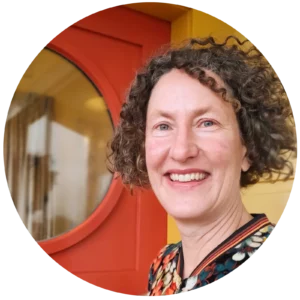“I believe that if physical activity was a drug, it would be classed as a wonder drug, which is why I would encourage everyone to get up and be active.”
Professor Dame Sue Bailey
Health can feel like a downwards spiral as we get older. Existing conditions can amplify or morph into new issues; increasing frailty can lead to falls or reduced activity; these factors may negatively impact quality of life and resilience which, in turn, cycles around into poorer health. But it doesn’t have to be that way.
Geriatricians (doctors who work with older adults) are always looking for ways to improve the quality of life of their patients and to stall this cycle of poor health in advanced years. It is well known that frail people have a greater risk of developing poor health and are less able to bounce back from health setbacks, but how do geriatricians identify those who most need help?
Dr Katherine Bloomfield (Waipapa Taumata Rau University of Auckland) brings her clinical experience as a geriatrician into her research work. She knows that the earlier you intervene on the frailty trajectory, the better the result. It gets increasingly hard to intervene later. Katherine wanted to develop a frailty index and test whether it could predict adverse health outcomes. If successful, it could be used to help decide when to intervene and prevent deterioration.
A frailty index is a tool that measures frailty on a scale from fit to severely frail by assessing deficits across multiple domains. The researchers used physical traits and symptoms, health conditions, medications, cognitive, sensory, and communication abilities, as well as psychosocial, mood, and function domains to develop a new index. Katherine saw a unique opportunity to look at how frailty changes in people over time and what might be influencing any changes seen. By building on data collected in phase one of the Ageing Well National Science Challenge, the researchers were not only able to develop a frailty index, but also validate it.
Over 500 residents of retirement villages had a health assessment done as part of the ‘Older People in Retirement Villages’ study carried out in phase one. Katherine considered the data ripe for developing a frailty tool because many frailty-related attributes were measured by trained personnel. Use of the InterRAI Community Health Assessment tool makes the index relevant both nationally and internationally. From 57 items, participants were classed as fit, mildly frail, or moderately-severely frail.
Much can change in the space of a few years so, for phase two research, gerontology nurse specialists went back to the original participants, surveyed them, and did InterRAI assessments again. They found that 306 people had had acute hospitalisations, 64 had been admitted into long term care, and 51 had died. But could the frailty index help predict which groups of people were likely to suffer such outcomes? Statistical assessment showed that it did a good job.
Overall, the analysis showed that people with increased frailty are more likely to need hospitalisation, long-term care, or die sooner than their fit counterparts. The moderate-severely frail group were almost four times more likely than the fit group to require acute hospitalisation and over five times more likely to enter long-term care or die in the two-to-three-year timeframe of the study.
Having a validated frailty index that can be used to predict adverse outcomes like this means people who need help can be efficiently identified. As it stands, the tool is for population-level analysis but making it useable for clinicians to identify at-risk individuals would also be very helpful. The ultimate goal is to develop a program of intervention to assist frail people in maintaining their health.
The researchers also looked at quality of life and resilience in the context of frailty. Anecdotally, many medically frail people described feeling strong and engaged. However, the data showed that the higher your frailty score, the lower your quality of life and psychological resilience. Therefore, finding ways to prevent or ameliorate frailty is an important public health challenge not only for avoiding ongoing medical complications that stem from frailty, but also for potentially improving quality of life for older adults.
Katherine hopes their work in retirement villages will highlight ways that village staff, and the industry more broadly, can play a proactive role in maintaining quality of life for residents. Research shows that after entry into retirement villages, especially those with onsite clinics, rates of hospitalization reduce, and there are excellent opportunities for socialising and exercising. And yet, there are many unmet needs.
Survey participant Patsy’s experience is a good example. She had enjoyed living in a retirement village for over ten years. But, over time, the village expanded to such an extent that she was on the periphery of a large development and, when her vision and mobility became impaired, she felt like an outlier. She found it hard to get to centralised services and couldn’t read the noticeboards, so ended up feeling very isolated.
Katherine is motivated to help people like Patsy lead fulfilling lives. When she was studying to be a doctor, Katherine would have laughed at the idea of becoming a geriatrician. During her training, she worked with an amazing geriatrician and witnessed the focus on communication, listening, and improving function for older people. As a registrar, she also worked with inspiring geriatricians and realised what a collaborative and satisfying specialty it could be. “We all feel fulfilled in this field. Knowing that you are helping someone who may be dying is rewarding. We work to honour and facilitate things that are important for that person.”
In the meantime, when it comes to staving off frailty, Katherine is keen for the exercise message to get through. Reducing physical activity as you age predisposes you to frailty. World Health Organisation guidelines illustrate that old age is not a reason to do less exercise, if anything, it’s a reason to stay as active as possible. They recommend a minimum of 150-300 minutes of aerobic exercise and several muscle-strengthening activities weekly for all adults, with additional balance and strength training for older adults. Just because you’re old, doesn’t mean you have to be frail, and the simple habit of regular physical activity may be the best way to avoid or slow the progression of frailty.
RESEARCHERS:
Dr Katherine Bloomfield
Dr Zhenqaing Wu
Annie Tatton
Cheryl Calvert
Professor Martin Connolly
Associate Professor Michal Boyd
Dr Joanna Hikaka
Dr Dale Bramley
Associate Professor Hamish Jamieson
Professor Ruth Hubbard
Dr Nancye Peel

